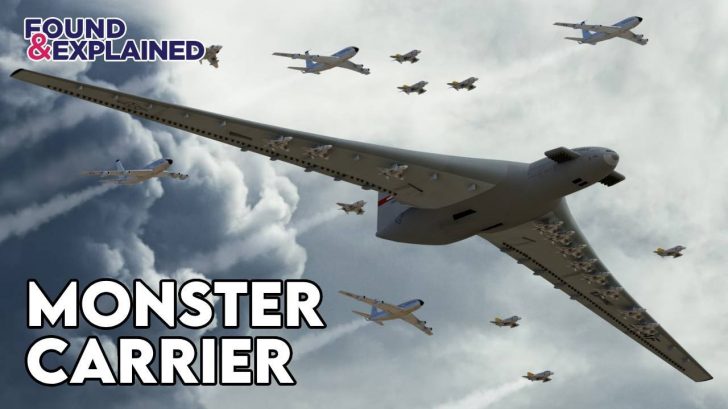While ships were the preferred method of deployment overseas for centuries, the introduction of jets gave rise to a bigger and faster form of travel in the 1960s. One great example is the Boeing 747, which flew for the first time in 1969. Then, enter Lockheed.
CL-1201 Proposal
Lockheed took inspiration from the 747 and envisioned three two (or three) aircraft: CL 1201-1-1, CL 1201-1-2*, and CL 1201-1-3.
If these were built, the massive planes would have had 5,440 tons of cargo capacity spread over several decks. In addition, the CLs would have been able to fly for at least 41 days straight.

There were six decks reserved for crews to sleep in, as well as space for recreation, a mess hall, and many more. For power, Lockheed planned on using nuclear power, with the reactor producing a total of 1.83 gigawatts. This would have allowed the CL-1201 to fly for up to 48 days at Mach 0.8 at over 16,000 ft. The onboard personnel was expected to be 475 members – with provisions to board 325 more during a combat mission.
1201-1 Attack Aircraft Carrier
The first version was designed to carry eleven fighter/bombers under each wing and two more in the fuselage hangars for a total of 24 aircraft.

It could also hold ten long-range attack missiles – with Lockheed not ruling out the use of nuclear warheads. During battles, the aircraft carrier is expected to circle the battlefield at 30,000 ft from 600 miles away.
1201-3 Logistic Support Aircraft
The LSA had plenty of space for 400 troops onboard and 1,150 tons of cargo. Soldiers inside the aircraft would be deployed using Medium Intra-theater Transports, which were just converted Boeing 707s.

The MITs would fly at the rear of the LSA and connect to the back of the plane. They would then open their nose through a special airlock to facilitate troop and cargo movement. Each MIT could carry 150 crew members – and with five MITs assigned to one LSA, the whole number of troops needed for the LSA would have ballooned to 1,150.
Flaws of the Design
Forcing these planes to go airborne is a struggle, to say the least. The runway itself would have to be 650 feet wide (minimum!). Not to mention how long the takeoff roll would have been. Lockheed tried to solve this problem by using 54 turbojet engines (from the 747) to provide 82,000 lbs of thrust for the LSA, while the AAC would need a staggering 182 jets for vertical lift. Once the plane was above 16,000 ft, the four massive turbojet engines near the tail would take over. The term “massive” means each engine would have a diameter of a Boeing 747.
Aerodynamics aside, these carriers would have also been susceptible to missile attacks. Lockheeds solution was a laser cannon defense system – which is just asking too much even today.
Predictable Ending
Simply put, the idea was completely bonkers. What about the logistics of the crew? The amount of money needed to research and develop the designs? Some technologies that were supposed to be on the aircraft weren’t even invented (or at least in their earlier stages) at that point.
Still, if the aircraft had been built, it would have had the largest wingspan of any aircraft to date. The wingspan would have spanned 1,120 ft, with the total weight of the aircraft coming in at 11.85 million lbs.



